Tag: oral history center
OHC Director’s Column – March 2020
From the Director — March 2020
From all of us at the Oral History Center, we are wishing you our best in these challenging times. We hope that you’re doing your best to get through the coming days, and above all, you and your loved ones are staying safe and healthy.
In a recent oral history, George Miller discussed the idea of the dreaded “Black Swan” event that might strike at a moment’s notice, leaving destruction and disruption in its wake. But Miller has artfully crafted a healthy sense of informed detachment and thus always used these events as an opportunity for learning and reflection. Perhaps the greatest lesson from the Black Swan events he experienced in the world of finance was that we always came out the other side — maybe a bit bruised but ready to face another day. So, as many of us sit at home, self-isolating, I invite you to take a break from the constant news feed of what is happening right now and instead spend some time in the past. Delve into the OHC archive of transcripts and recordings and expose yourself, for example, to many individuals who achieved great things in their lives but who each experienced Black Swan events of their own. Trial and turbulence, patience and perseverance.
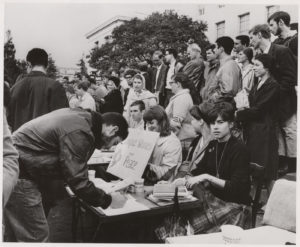
Perhaps not surprisingly, many of the most remarkable of these stories come from women we’ve interviewed, in particular those women who broke glass ceilings in the workplace and the realm of politics. We’re currently developing a database documenting the hundreds of women we’ve interviewed over the years who were connected to the University of California — as part of the 150 Years of Women at Berkeley celebration. And we continue to contribute to this history with plenty of recent interviews, including female students who were active in the SLATE organization on campus in the 1950s and 60s. And then many more interviews with women who persevered while working in support of the arts (Kathleen Dardes), the environment (Michelle Perrault), and public service (Anne Halsted). You’ll see a handful of those stories referenced in this newsletter but I encourage you to just jump in, browse the collection (our Projects page is the best way to do this), and allow the thousands of life stories we’ve collected give you reassurance, perspective, and company.
Finally, we’ve made the decision to postpone our annual Oral History Commencement in which we invite our interviewees to campus for a lively celebration of oral histories completed in the past year. We still want to express our gratitude to our narrators, so stayed tuned.
Martin Meeker, Charles B. Faulhaber Director of the Oral History Center
OHC Director’s Column – January 2020
From the OHC Director:
The staff of the Oral History Center wishes everyone a happy and productive 2020!
After a long winter’s rest for the Berkeley band of oral historians, this year has jumped off to a running — and even wild — start.
For one, we have begun the unveiling of our lengthy life history interview with four-term California Governor Jerry Brown. Done in partnership with KQED Public Media, this oral history also serves as the first interview conducted for the relaunched California State Government Oral History Project, a project of the Secretary of State. Read more about the interview background and context — or the interview itself. Here’s the page that serves as clearing house for all information about and coverage of this important oral history
We are in the final phases of preparing a number of new interviews for release in the coming weeks and months, including new releases for our projects with: the Sierra Club, the East Bay Regional Park District, the Presidio Trust, San Francisco Opera, the founders of Chicano/a Studies, and the Getty Trust African American Artist project.
Along with our usual oral history work, we are preparing for our annual Introductory Workshop (Leap Day! February 29th) and Advanced Summer Institute (August 10–14). Applications for the Introductory Workshop and Advanced Institute are both now open.
Come back in February for a more substantive column from your’s truly. Until then, back to that reservoir of unread emails!
Martin Meeker, Oral History Center Director
#notoralhistory
by Shanna Farrell
@shanna_farrell
During the first few months that I was settling into life in the Bay Area after moving across the country, I often listened to WNYC, a New York City-based radio station. One morning, as I was riding my bike to work, the host of their call-in show, akin to KQED’s Forum, announced the upcoming segment.
“What was better back in the day?” the host asked. “It’s an oral history of nostalgia, starring you. Tell us about what you think was better from a previous era, why you miss it, and whether you think it’s better because of nostalgia, or because things were, empirically, better back in the day. Call us or post below.”
My heart started to race. This call out felt so personal. They had gotten it so wrong. I pulled over and dialed their number. A producer answered, unaware of their error.
“I just heard your next segment is on the oral history of nostalgia,” I said. “But that’s not oral history.”
Confused, she asked me to explain what I meant. It was October of 2013, and I was fresh off earning a Master’s Degree in Oral History. I had spent a year taking method and theory classes, learning about what defines the discipline, exploring its boundaries. I had my interviews critiqued, my questions workshopped, and had been pushed to dig deeper into my research, all in the name of preparation. This felt dismissive of the work that we oral historians put into our interviews. It devalued the time (and money) that I’d put into my degree, and the job that I had just landed at UC Berkeley’s Oral History Center.
As I tried to explain what oral history is and how what they were doing in this segment wasn’t it, I realized it would be impossible to fit into a two sentence elevator pitch. There’s so much that defines oral history, that makes it unique, distinct from other methods, that I could feel myself having trouble reducing it to something easy to pitch, just as they had to listeners.
Looking back on that moment, I wish I would have said that oral history is defined by the planning, the transparency, the collaboration, the recording, intersubjectivity, the preservation, the legacy. I wish I would have said that it could take weeks to carefully research and write an interview outline, hours to build rapport, and months to complete an interview series. I wish I would have said that it takes practice to craft questions and to listen in stereo, picking up on the things that aren’t said, and to be comfortable sitting in silence.
After I hung up the phone, I thought about why they called this segment “oral history.” I’m still thinking about it. The term became popular when magazines started running vox populi style interviews weaving together soundbites from different people to create a narrative. They ran pieces about the about the making of a movie, like Jurassic Park, or a TV show, like The Simpsons. Later, it became a household term when StoryCorps partnered with NPR to bring us our Friday driveway moments, produced from a carefully edited interview excerpt. Lately, it has seeped into literature. More and more, I see “oral history” to describe a work of memoir, creative nonfiction, and even fiction. Recently, I was reading the Sunday New York Times book review section and they positioned a new memoir as “part oral history, part urban history.” I couldn’t wrap my head around what this meant. How was it oral history? Had the author done interviews? How was this different from a regular memoir? And lately, I’ve seen a few journalists refer to themselves as oral historians without seeming like they have a solid understanding of what the term means, aside from it involving interviews.

Where does this lack of understanding stem from? Why is the term “oral history” battered around so easily? When did it first get misappropriated? The origin of the Entertainment Weekly and Vanity Fair versions are relatively straightforward, descending from the Jean Stein-style books like Edie: American Biography, which is constructed from interviews with people who knew Edie Sedgwick after her death in 1971, or books that recounted musical eras, like We Got the Neutron Bomb by Mark Spitz and Brendan Mullen (which also served as my first introduction to oral history when I was in high school) or Please Kill Me by Legs McNeil and Gillian McCain. As for where the rest of it came from – like the recent trend in literature – it’s anyone’s guess.

I’m not the only one who has been noticing this trend. In 2014, the anonymous user @notoralhistory joined Twitter. For a while, they tweeted examples of people labeling articles or projects as oral history that were, indeed, not actually oral history. They now promote examples of oral history and engage in conversations around best practices. There are practitioners who also tweet bad examples of oral history, using #notoralhistory, which are often amusing, and then maddening, and then amusing again.
The problem with these mediums is that they can’t accomplish the same things that actual oral history does. These narratives just provide soundbites, while oral history gives us much more context. They don’t include any audio (or video), so we lose the ability to connect with a human voice. They are highly edited, whereas oral history allows people to speak in their own style. They are usually layered with other voices, instead of giving someone individual space to fully narrate their own story.
The link in @notoralhistory’s bio takes you to the Oral History Association’s website, to the page where they define oral history. Here, they share a quote from Donald Ritchie’s book, Doing Oral History. He writes:
“Oral History collects memories and personal commentaries of historical significance through recorded interviews. An oral history interview generally consists of a well-prepared interviewer questioning an interviewee and recording their exchange in audio or video format. Recordings of the interviews are transcribed, summarized, or indexed and then placed in a library or archives. These interviews may be used for research or excerpted in a publication, radio or video documentary, museum exhibition, dramatization or other form of public presentation. Recordings, transcripts, catalogs, photographs and related documentary materials can also be posted on the Internet. Oral history does not include random taping, such as President Richard Nixon’s surreptitious recording of his White House conversations, nor does it refer to recorded speeches, wiretapping, personal diaries on tape, or other sound recordings that lack the dialogue between interviewer and interviewee.”
Oral history can accomplish so much. It gives us insight into the past, hearing directly from the people who lived through various moments in history. By archiving the recordings, we can listen to how narrators tell their stories, and gain insight into why they told it this way. We can put a human face on history and learn from those who came before us. And, when oral history is done right, through careful preparation, research, and recording, we can ensure that these people are not forgotten, their stories not reduced to a soundbite.
It is with similar intention that we are devoting many of our articles this month that revolve around the boundaries of oral history. You’ll hear from us about our experience doing oral history and what makes it different from other disciplines and methods. We hope you follow along.
Bay Area Women in Politics Oral History Project
This project is unique in that it focuses on women in one geographic region in order to get a clearer picture of the breadth of political work women have been doing on the ground and behind the scenes.
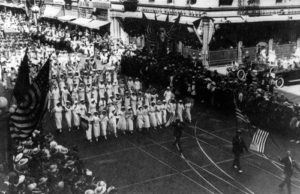
Nineteen ninety-two has been dubbed “The Year of the Woman,” a phenomenon in which a wave of women candidates swept local and national races for public office. California led this charge by becoming the first state in American history to be represented by two women senators—Barbara Boxer and Dianne Feinstein. And since 2016—after a presidential election that provoked heated debate about gender discrimination and sexual harassment—many women stepped up to the challenge of engaging even more visibly in the American political system. Since then, organizations like Emily’s List and She Should Run reported record-breaking numbers of women who wanted to make their voices heard by running for public office.
And yet, 1992 was not the beginning of women’s political activism, but rather the culmination of decades of organization encouraging women to get involved and run for office. For generations, Bay Area women have built the foundations of political activism that span neighborhood organizations to support networks. And their stories inform our present.
In order to document these stories, I am developing the Bay Area Women in Politics Oral History Project to record the history of these local women and their impact on and journeys through politics. The Oral History Center of The Bancroft Library at UC Berkeley continues to preserve stories about California politicians, but this project is unique in that it focuses on women in one geographic region in order to get a clearer picture of the breadth of political work women have been doing on the ground and behind the scenes. Documenting political engagement outside of traditional political venues will capture more stories about women in politics and a more diverse array of stories.
For instance, the pilot interview for this oral history project is with Mary Hughes, a Bay Area political consultant. In her interview, Hughes explained that “in politics and in political consulting, you either win races or you don’t. If you don’t win, no one hires you. If you do win, everybody wants to hire you.” Hughes’s successful career in the Bay Area spans decades and highlights the prominence of women in national politics. And though she does not wish to run for office herself, Hughes sees her role as someone who can best serve her community by managing the election process for political candidates—especially other women. Hughes’s recollections are an example of the kinds of stories that will drive this oral history project.

These long-form oral history interviews survey Bay Area political women’s backgrounds in and passion for political work through self-reflection. This format allows for comparisons between various avenues of political activism—like organizers and elected officials. It also reveals the importance of networks and mentors, and the impact they have had on women in the Bay Area political scene.
As engaged citizens, we need to know more about these women who helped create a space for themselves in Bay Area political life. Who are these women and what are their stories? From neighborhood organizations to national campaigns, what is the range of political activism in which these women engage? How has being a woman been a challenge or an asset to their political involvement? How have these women been working in the background of political life for generations? How does living and working in California affect political opportunities? What kind of political power do these women wield locally and nationally?
As we approach the hundredth anniversary of women’s suffrage, conducting oral histories with women activists and politicians in California’s San Francisco Bay Area will help shape the national narrative about women’s historic, current, and future roles in American political life. Further, gathering firsthand stories will help inspire and instruct a new generation of politically engaged women.
In addition to collecting primary source materials, The Oral History Center shares its collection with the general public through interpretive materials—like podcasts—and educational initiatives. Recording the contributions of these impressive Bay Area women—political fundraisers, organizers, and elected officials—through life history interviews is the first step in developing curriculum for workshops that cultivate young women’s political leadership. These workshops will use oral histories as a tool to foster civic engagement across the political spectrum, as well as to help develop confidence and skills of future women leaders. We also plan to create a podcast, a series of public forums, and a museum exhibit featuring these interviews.
We are currently raising funds for this project, and need your help to undertake the expansion of this ambitious oral history collection. You can support this project by giving to the Oral History Center. Please note under special instructions: “For the Bay Area Women in Politics Oral History Project.” To learn more about this project, please contact Amanda Tewes at atewes@berkeley.edu or 510-666-3687.
Amanda Tewes is an interviewer with The Oral History Center and specializes in California history and political culture.
The Oral History Center is a research program of the University of California, Berkeley. The OHC helps preserve contemporary history by conducting carefully researched video recorded and transcribed interviews. As part of UC Berkeley’s commitment to open access, archival copies of the audio/video and transcripts are placed in The Bancroft Library and are publicly accessible online.
The Science and Art of Oral History: My Internship Experience
Eleanor Naiman is a rising senior at Swarthmore College majoring in History. This past summer, Eleanor worked with historian Amanda Tewes of the Oral History Center on the Bay Area Women in Politics Oral History Project. As an intern, Eleanor researched the contributions of women to Bay Area politics and assisted Tewes with her interviews. Here, Eleanor reflects on her internship experience in the Oral History Center.
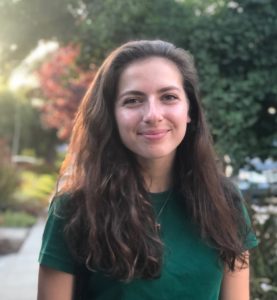
Eleanor Naiman, 2019
There is a science to professional oral history. From start to finish, the interview process requires meticulous attention to detail and respect for technique, form, and skill. When an OHC historian sets off to conduct an interview, be it a conversation with a Bay Area political consultant or with a Connecticut anthropologist, she does so equipped with heavy black bags of tools and folders and parts that, to the untrained (read: intern) eye, might seem better suited for the high-tech activities of a secret agent than the practice of oral history. And yet, each cord, mic, form, and gadget plays an integral role in the interview process.
Over the course of my summer as an intern at the OHC, I’ve become better versed in this highly technical science of capturing a story. I’ve learned how to identify a potential narrator and with which forms to ask for her consent. I’ve spent long hours researching the entirety of her life, creating an outline of its twists and turns and of the people with whom it has come into contact. I’ve become a convert to the practice of the “pre-interview,” a conversation that allows the interviewer to check her facts and flesh out her timeline.
Even the intimidating black tool bags have become familiar. I’ve learned to unfold a tripod to just the right height. To angle a camera towards my narrator’s left cheek, framing her head from hair to collarbone and obscuring her lapel microphone. I know how to initialize an SD card; how to stop recording, then press power; and how to make the light in the room warmer or cooler based on the narrator’s proximity to a window. My technical skills are far from perfect, and it often takes me about five times longer to set up equipment than it should, but my fumbles and mistakes only reinforce my newfound appreciation for the complex science of oral history.
And yet, if oral history is a science, it is also an art.
I have learned that oral history, at its root, relies not on the positioning of the camera or the placement of the mic but on the strength of the trust carefully built by both historian and narrator during weeks of exchanges and phone calls preceding the interview itself. This trust is not quantifiable; a relationship, it turns out, is harder to assemble than a camera tripod.
I have learned how to speak my narrator’s language, repeating the terminology she’s used to reinforce her sense of ownership of her life stories. I know to follow the flow of her memories, asking open-ended questions that evoke the feelings she experienced in a time or place. I try to understand how my own biases inform my questions, and to consider how intersubjectivity influences the relationship my narrator and I can build. I have learned to listen more deeply than I ever have. Perhaps most importantly, I know to allow my narrator to guide our conversation as an equal partner in this history we’re creating together.
This summer I have become a techie and a philosopher, a stickler for spreadsheets and a careful listener, a more confident camerawoman and a historian never so acutely aware of all that she does not know. In short, I have become a scientist and an artist: an oral historian.
My First Brush with Oral History
I first encountered oral history in my master’s program in history at California State University, Fullerton. I chose the program because it had strong public history training, but in my research about the school I discovered the pedagogy included something called “oral history.” I scratched my head at that, but added that information to a laundry list of graduate school problems labeled: “I guess I’ll figure it out when I get there.” After all, I wanted training to be a museum curator – and nothing else.
Things didn’t go according to plan.
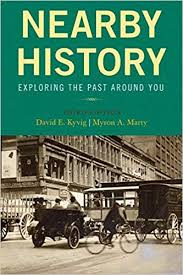
My introduction to oral history was immediate. In my first public history course, a fateful assignment meant I needed to lead a small group discussion about oral history as historical evidence and as practice. My sense of oral history at the time was pretty limited to oral tradition: elders informally sharing knowledge about the past. My group consisted of undergraduates and graduate students who also had little to no experience with oral history, so we set out to discuss: what is oral history and what is its value to public historians?
We debated the reliability of oral history, given its dependence on memory and subjective experiences. We talked about how differing approaches to transcription shade researchers’ experience with oral history source material. We also questioned whether oral history had a place in public history writ large, or if it should be a separate discipline. And yet, we all agreed that it was important to record people’s life experiences, that their stories are inherently valuable.

I began the assignment deeply skeptical of oral history, but at some point during this discussion I found myself defending the practice because of the value of these alternate stories. In part, public history springs from an activist tradition hoping to recover pasts not about white male leaders, but of the everyday and everyman. With that framework in mind, I ended up posing the question: is oral history the most egalitarian practice in public history?
My argument was that much of the time museum exhibits are the result of so-called experts communicating history to the public; it’s an expensive and laborious process that doesn’t always involve the people who witnessed the history presented in the exhibit. But oral history, it’s different. At its core, oral history involves two people sitting down to chat using potentially inexpensive equipment to record their conversation. This process takes place outside the Ivory Tower and requires talking – and really listening – to people in your community, people whose lives and expertise have often been under acknowledged or completely overlooked. In theory, oral history can invert the power structure of just who is the expert. Unlike the rest of the historical profession, oral historians don’t just study the past, they help shape documents about the past by interacting with the people who lived it.
It was during this initial assignment about oral history that I began to question where oral history fits with other historical evidence. I eventually concluded that oral history is different from other text-based sources because it comes with a set of complications about collecting the information. And yet, oral history is also different because sharing human experiences through oral tradition is a powerful tool in making sweeping historical narratives personal and relatable – this connection to the past is difficult to achieve through census records.
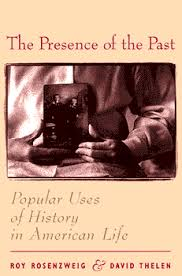
It was through these discussions and further exposure to the value of first-person interviews that I finally resolved my questions about how oral history relates to public history. And oral history has become an important mainstay in my toolkit in my career as a public historian.
William C. Gordon: A Life in Libraries, the Law, and Literary Noir
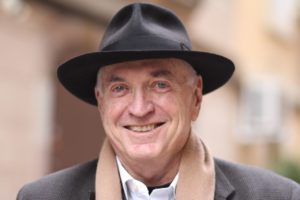
Image by Ana Portnoy, 2017
We are excited to announce the release of our oral history interview will William C. Gordon, lawyer, noir writer, and library supporter. He was born and raised in Los Angeles, California and attended college at the University of California, Berkeley. He earned his law degree at the University of California, Hastings College of Law. He worked as a lawyer in San Francisco for many years before becoming a mystery writer. He is the author of six books, including The Chinese Jars, King of the Bottom, and The Halls of Power, among others. He is also an enthusiastic supporter of libraries, and has made significant contributions to the Whittier High Library and to The Bancroft Library for their burgeoning California Detective Fiction Collection.
OHC Interviewer Shanna Farrell sat down with Gordon in 2017 to discuss his early life growing up in Los Angeles, his affinity for libraries, education and career in the Bay Area, and becoming a writer in his retirement.
Paul A. Bissinger, Jr.: Lifelong San Franciscan and Patron of the Arts
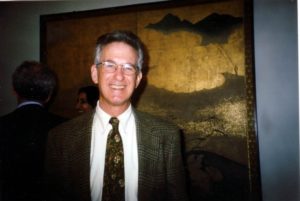
We are pleased to announce the release of our interview with Paul A. Bissinger, Jr. Bissinger was born in San Francisco, California in 1934 to Paul Bissinger and Marjorie Pearl Walter-Bissinger. He was raised on Divisidero Street and attended the Town School. He attended high school at the Phillips Exeter Academy, attended college at Stanford University, and earned a graduate degree from the American Institute for Foreign Trade. He served in the Navy in the 1950s, which took him to Japan, Hong Kong, and Manila. He’s been a life-long patron of the arts, which began as a child. He has a passion for the San Francisco Youth Orchestra, which he has been involved with for many years, and his service was honored by a performance dedicated to him on his 70th birthday.
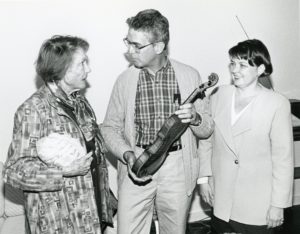
In his interview, Bissinger discusses his early life, education, time in the Navy, meeting his wife, Kathy, and starting a family, working for his family business, and commitment to the local arts community. He also talks about serving on multiple boards for arts organizations, including for the San Francisco Youth Orchestra and Asian Art Museum.
OHC Announces Summer Fellowship for UC Graduate Student of Color
UC Berkeley’s Oral History Center is offering a $2,000 summer fellowship to a graduate student of color enrolled in the UC system. Aimed at early to mid-career oral historians, this fellowship provides an opportunity to conduct a longform life history interview with a leading figure in the arts or humanities. The selected fellow will conduct a 4-8 hour interview on video, which will be archived at The Bancroft Library. The fellow will see the interview series through from conception to completion and will present on their project at the Oral History Center’s annual Summer Institute.
This fellowship is open to graduate students of color who are enrolled in the UC system. Preference will be given to projects with a U.S. focus, but consideration will be given to international projects that have impact in the U.S.
The fellow will work with OHC Interviewer Shanna Farrell to hone project planning, the structure of the interview, and presentation. Interviewing will take place during June, July, and August. The fellow is expected to be on UC Berkeley’s campus during the Summer Institute, which takes place from August 5-9, 2019. The fellow will have the opportunity to work out of the Doe Library and check books out as needed. Equipment (if needed) and transcription for the interviews will be provided by the Oral History Center.
Applications are open January 14 – February 25, 2019. Award notifications will be send out in late March. Please email Shanna Farrell at sfarrell@library.berkeley.edu with any questions.
OHC Director’s Column – January 2019
From the Oral History Center Director:

Paul “Pete” Bancroft, III, a 1951 graduate of Yale, a pioneer in venture capital, and the eldest great-grandson of Bancroft Library founder Hubert Howe Bancroft, died peacefully in his sleep on January 3, 2019, at the age of 88.
We at The Bancroft Library’s Oral History Center are extremely grateful for his support of over the years. The word “support,” however, is wholly inadequate to capture what he did for oral history at Berkeley. Pete Bancroft was, in fact, its greatest single benefactor in the 65-year history of our office.
Pete’s first major engagement with the Oral History Center (or, as we were known at the time, the Regional Oral History Office) began around 2007 with discussions about a possible oral history project documenting the history of venture capital in the Bay Area. Not only did Pete step forward to sponsor the project, he played a critical role in helping to articulate the major themes and issues to be covered in the interviews. He also created an advisory committee of scholars and leaders in the field that gave the project instant credibility and served on that committee; and he reached out personally to many of the key players whom we wished to interview, setting forth the goals of the project and convincing those who might have been reluctant to participate. Sally Hughes, who was the project director and interviewer for these oral histories, wrote to me upon learning of Pete’s death: “As the interviewer for the Center’s venture capital project, I could not have asked for a better sponsor in organizing, completely funding, and advising the project every step of the way. In his warm and supportive manner, he made it clear that we were a partnership in trying to create the best possible series of interviews on the foundational era of venture capital. It was a subject dear to his heart as one of its early participants.” When completed, the project resulted in 19 lengthy oral history interviews with the pioneers of venture capital, including Franklin “Pitch” Johnson, Art Rock, Reid Dennis, Tom Perkins, Don Lucas, Don Valentine, Bill Draper, Bill Bowes, and Pete himself. In addition, Pete facilitated the donation of another group of interviews already conducted by the National Venture Capital Association. Pete Bancroft played a crucial role in creating this “must read” resource for anyone interested in the history of venture capital.
The years around the financial crisis of 2008 were difficult ones for this office. In addition to waning donations and external support, several retirements left us greatly understaffed. For the few of us remaining, myself included, there was a nervously voiced worry that the fifty-plus year tradition of oral history at Berkeley might be reaching an end. In the wake of these worries, Pete was conspiring behind the scenes to make certain that oral history would continue at Berkeley. He was a good friend of long-time Bancroft Library director Charles Faulhaber. When Faulhaber retired in 2011, Pete paid tribute to his friend’s leadership of Bancroft by creating the Charles B. Faulhaber Endowment, whose income was to be dedicated to the oral history program. Pete had only one request: that the name of the office be changed. Happily, the staff of the center recognized that we had long ago outgrown the “regional” in our former name and readily embraced the new moniker of the “Oral History Center of The Bancroft Library.”
Other than the name change, Pete asked for nothing in return for creating the Faulhaber endowment, which was built with his donations and those of many of his friends and venture capital colleagues. This endowment has been critical to the recent success of this office. Because only one of eight full-time staff positions, and none of the related costs of conducting interviews (equipment, transcription, travel), is paid for by the university, all of our projects require external funding. However, project funds can only support project-related activities and there is a lot more that we do — and want to do — than just conducting interviews, transcribing them, and editing them. Pete Bancroft’s “Charles Faulhaber Endowment” allows the Oral History Center to do so much more: we can host formal and informal training for those who want to learn oral history methodology from our highly-skilled team of historians; we can now create interpretative materials based on the interviews that we conduct, including, now, three seasons of our in-depth podcast series, “The Berkeley Remix”; and, perhaps most importantly, the Faulhaber endowment allows us to conduct research and development in support of new projects. We are fortunate to have a smart, ambitious, and creative group of oral historians who come up with potentially important project ideas; this endowment gives us the ability to pursue those ideas by doing background research, conducting pilot interviews, and seeking funding to make these ideas a reality. Thus, Pete Bancroft continued his career in venture capital with the Oral History Center: by providing perpetual seed funding, he has established a lasting legacy of innovation, experimentation, and entrepreneurship among the publicly-engaged scholars at the center!
In his final months of life, Pete Bancroft continued to think about and look after his friends, including the Oral History Center. Charles Faulhaber, returning the honor given to him by Pete, created the “Pete Bancroft Endowment for the Oral History Center,” with an initial gift from Pitch Johnson and additional gifts from many of the same philanthropists who supported the earlier one as well as his ‘Hill Billies’ campmates at the Bohemian Club. And like the Faulhaber endowment, this one will support the ongoing work on the Oral History Center. In a touching note just after Pete’s passing, Faulhaber let me know that Pete was thinking of us until the end, making a major donation to the endowment in the final weeks of his life. With this news, we sadly bid farewell to an esteemed and gracious benefactor — our angel investor.
Martin Meeker, Charles B. Faulhaber Director of the Oral History Center